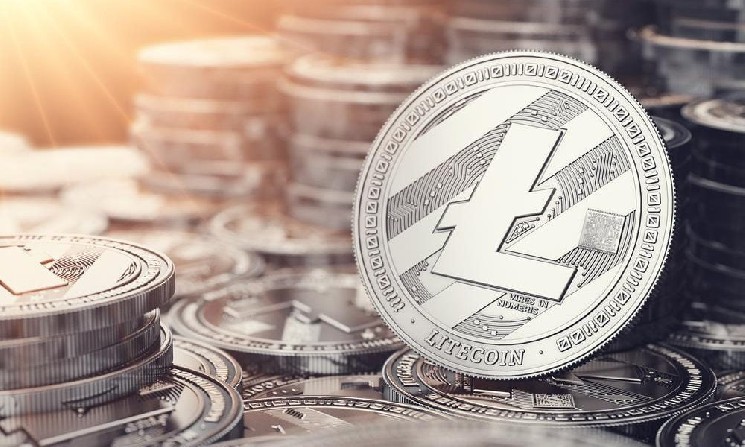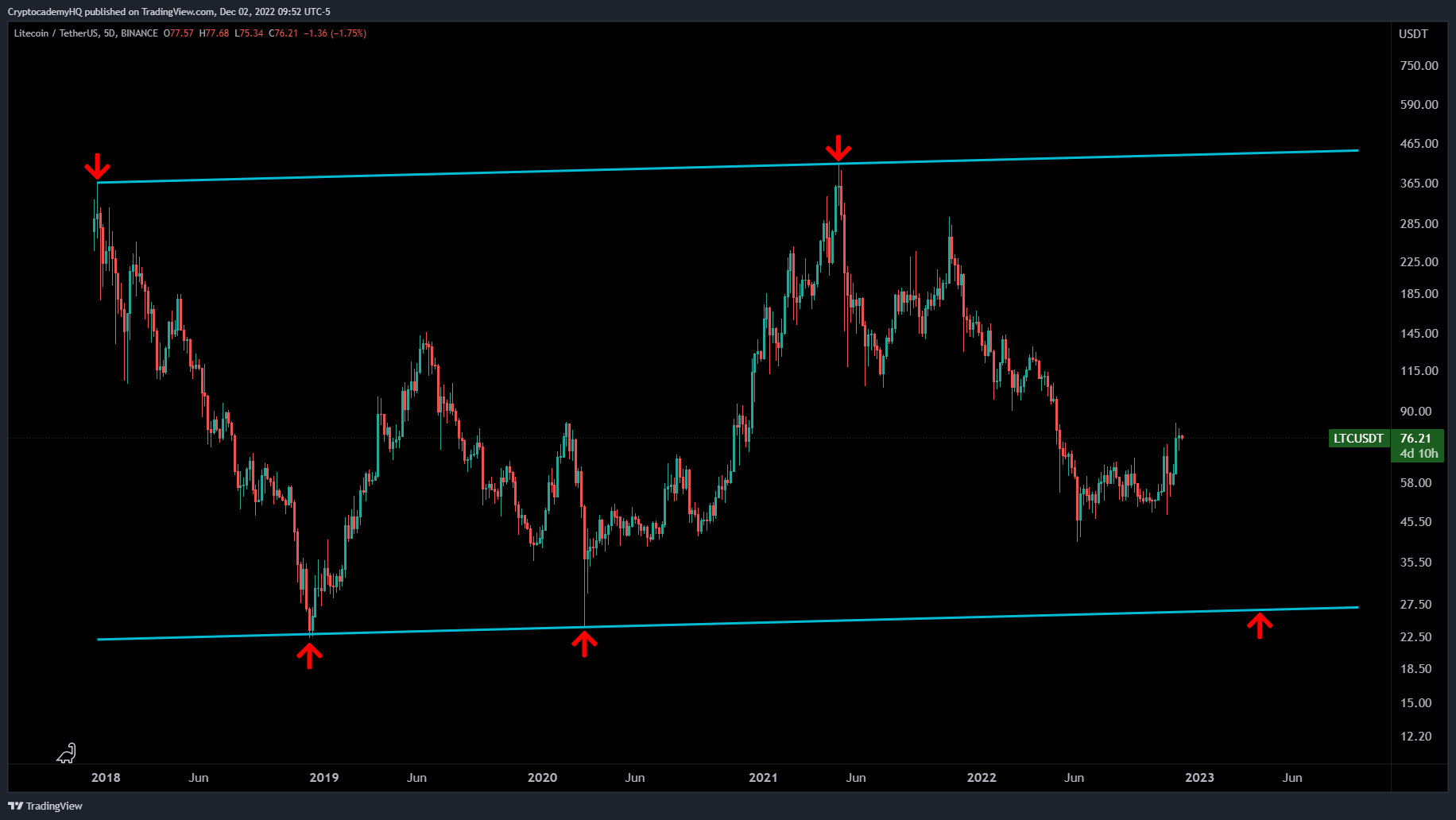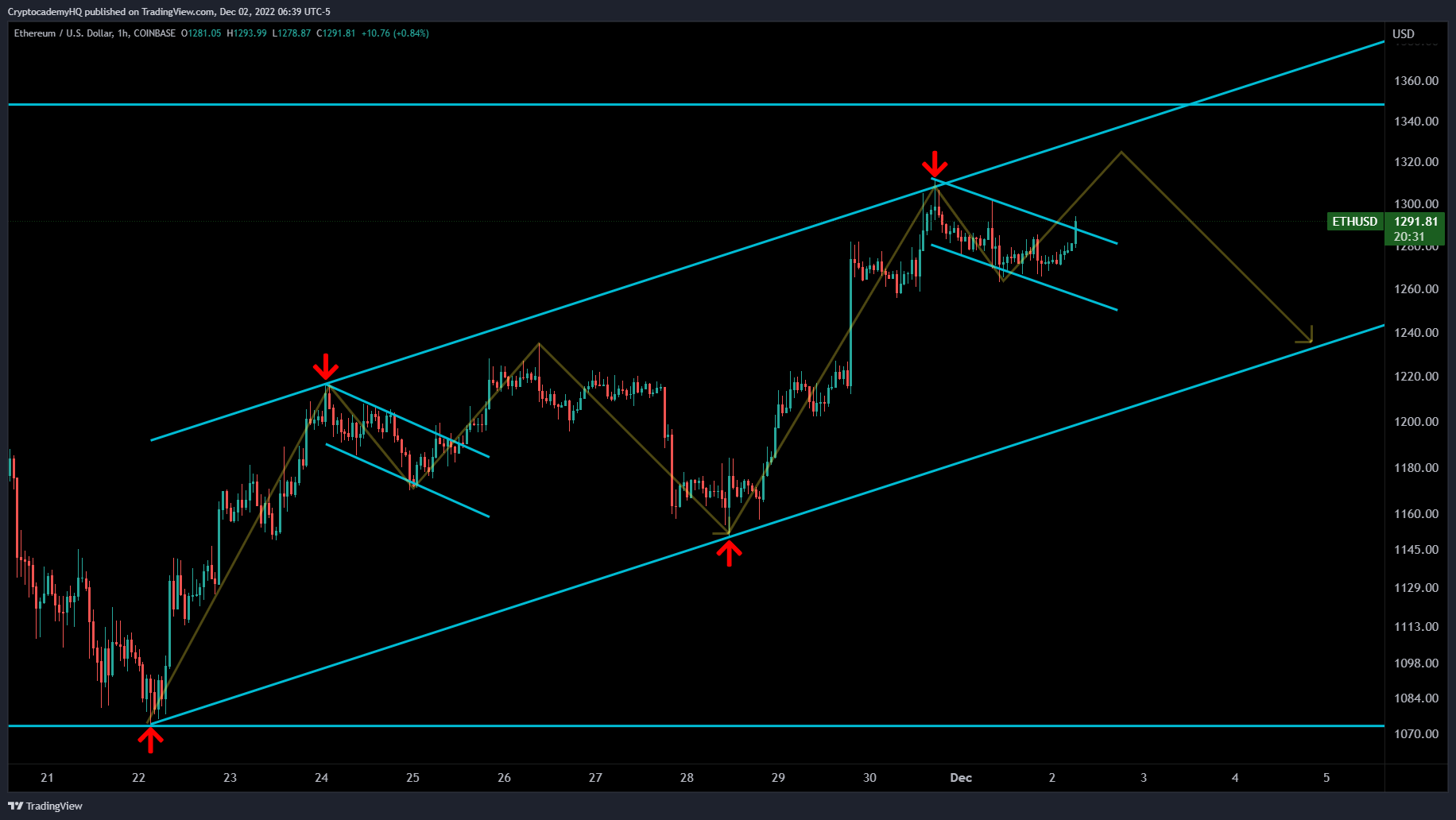Криптоаналитик считает, что в паре с биткоином Litecoin выйдет вперёд

Криптовалютный стратег Джастин Беннетт написал в Твиттере, что он с большим оптимизмом смотрит на будущее Litecoin и ожидает, что 15-я по величине по рыночной капитализации криптовалюта превзойдёт биткоин.
По словам аналитика, вероятно, в 2023 году LTC продолжит удерживаться между минимумом около $ 30 в качестве поддержки и уровнем $ 465 в качестве зоны сопротивления.

Вечером 3 декабря Litecoin торговался по $ 76,20, а цена биткоина колебалась около отметки $17000. За последние 30 дней пара Litecoin/Bitcoin (LTC/BTC) выросла почти на 70% и более чем на 20% за последние две недели.
Оценивая Ethereum (ETH), криптоаналитик заметил, что второй по величине рыночной капитализации цифровой актив, скорее всего, упадёт после достижения локальных максимумов.
Я упомянул об этом вчера, ETH сформировал модель, аналогичную той, что мы видели в конце ноября. Следите за локальными максимумами, чтобы зайти в длинные позиции.

Беннетт предполагает, что ведущая платформа смарт-контрактов находится на пути к достижению локального максимума около $ 1320, правда, при этом не исключён возврат к отметке $ 1240.






 Bitcoin
Bitcoin  Ethereum
Ethereum  Tether
Tether  USDC
USDC  TRON
TRON  Dogecoin
Dogecoin  Cardano
Cardano  Chainlink
Chainlink  Stellar
Stellar  Bitcoin Cash
Bitcoin Cash  Hedera
Hedera  LEO Token
LEO Token  Litecoin
Litecoin  Monero
Monero  Cronos
Cronos  Dai
Dai  Ethereum Classic
Ethereum Classic  OKB
OKB  Algorand
Algorand  Gate
Gate  Cosmos Hub
Cosmos Hub  VeChain
VeChain  KuCoin
KuCoin  Tether Gold
Tether Gold  Stacks
Stacks  Tezos
Tezos  IOTA
IOTA  Theta Network
Theta Network  Zcash
Zcash  TrueUSD
TrueUSD  NEO
NEO  Polygon
Polygon  Decred
Decred  Dash
Dash  Basic Attention
Basic Attention  Synthetix Network
Synthetix Network  Qtum
Qtum  Zilliqa
Zilliqa  Ravencoin
Ravencoin  0x Protocol
0x Protocol  Holo
Holo  Siacoin
Siacoin  DigiByte
DigiByte  Waves
Waves  Nano
Nano  Enjin Coin
Enjin Coin  Ontology
Ontology  Status
Status  Hive
Hive  Lisk
Lisk  Pax Dollar
Pax Dollar  Steem
Steem  Numeraire
Numeraire  BUSD
BUSD  Huobi
Huobi  OMG Network
OMG Network  NEM
NEM  Bitcoin Gold
Bitcoin Gold  Ren
Ren  Augur
Augur